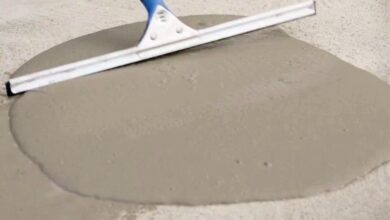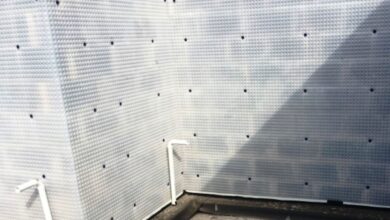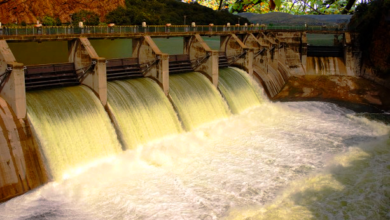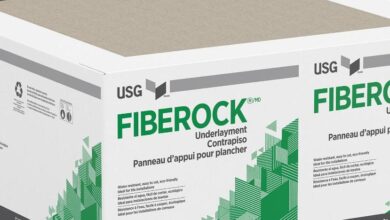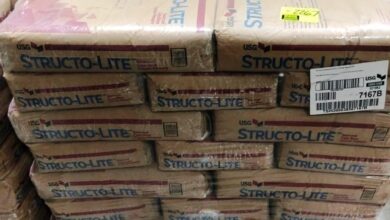Can Drywall Be Used With AquaDefense? (Detailed)
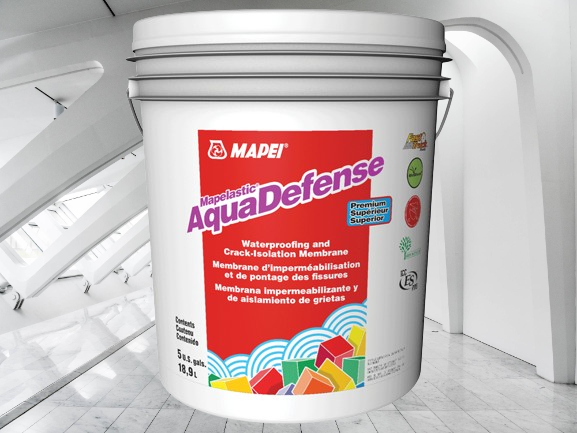
The susceptibility of drywall to water damage is high. That’s the reason you might be thinking about using AquaDefense or another waterproofing product. RedGard and this product are in the same category.
It acts as a barrier to isolate cracks and provide waterproofing. Additionally, AquaDefense can be used on drywall. But is it wise to do so? Continue reading to learn more.
Is AquaDefense Compatible With Drywall?
It most certainly will. AquaDefense is offered as a liquid. Applying it with a roller brush over drywall is possible.
If AquaDefense is allowed enough time to cure, it will stick to the drywall and form a waterproofing barrier. However, applying AquaDefense to drywall is not advised.
Why Is AquaDefense Not Suitable for Use with Drywall?
Let’s examine the reasons why you might think about using AquaDefense in the first place so that you can better understand why it shouldn’t be used on drywall.
Mapei produces a waterproofing product called AquaDefense. This membrane is composed of advanced liquid rubber that dries quickly.
When applied to a surface, AquaDefense forms a waterproofing crack isolation membrane that is perfect for the installation of tiles.
As a result, you might be thinking about applying AquaDefense to drywall in order to produce a waterproofing crack isolation membrane before installing tiles.
However, drywall has a flaw in that it shouldn’t be installed in an area that is extremely moist or damp. Of course, if you use the right mortar and do sufficient prep work, you can tile over drywall.
At some point in the future, the drywall will sustain significant damage if AquaDefense is applied over it in a frequently wet area. Moreover, the repairs will be rather expensive.
In summary, AquaDefense should not be applied to drywall in a high-moisture area, like a kitchen or bathroom.
You don’t need to use AquaDefense to waterproof drywall if you plan to tile a standard room like a bedroom.
Use Cement Board in Place of Drywall, Then Apply AquaDefense
The idea that drywall can be used in a shower system as long as it is waterproofed is a common one.
The settings for a shower are fairly complicated, and making a mistake can have serious repercussions. Water can easily cause damage to drywall. Mold growth can also result from having drywall in your showers.
What happens if you use AquaDefense to waterproof it? Indeed, drywall can be protected from moisture when waterproofed.
It is nearly impossible for AquaDefense to function if there is a seam or other opening that could allow water to seep into the drywall substrate.
Even with AquaDefense installed, moisture seeping through the underfloor may still expose drywall.
When that occurs, your home’s drywall will deteriorate and allow mold to grow. The mold in the walls will endanger your health, and the repairs will be fairly costly.
For the application of AquaDefense, drywall in a shower area or any other high-moisture area should be replaced with cement board rather than taking such a significant risk.
Cement board is more moisture- and weather-resistant than drywall. It won’t break down or lose its shape no matter how wet it gets.
It could seem like a quick and easy way to waterproof drywall to apply AquaDefense to drywall. However, leaks are unavoidable. Use a cement board instead for safety.
Is It Possible to Use AquaDefense on Drywall That Resists Moisture?
Regular drywall should not be treated with AquaDefense as it is susceptible to damage from moisture seeping through. However, you can use moisture-resistant drywall in the bathroom—a.k.a. green drywall.
However, keep in mind that green drywall isn’t completely impervious to moisture. Overexposure to water will cause damage to it.
Which Product Is Suggested for Drywall Showers?
It’s evident from the above that AquaDefense shouldn’t be used in showers that have drywall. This is because moisture will eventually seep through other areas of the drywall and cause damage.
Which waterproofing product can I use on showers that have drywall, you may be wondering.
It’s crucial to note right away that hanging drywall in a shower or other high-moisture area is a novice mistake. Regardless of whether drywall is moisture-resistant or not, no skilled or knowledgeable contractor would install it in a damp area.
To reiterate, drywall does not fare well in wet environments. Because cement board is more durable than drywall, it is preferable to replace any drywall that you find in your shower.
AquaDefense is not recommended if you would rather waterproof the drywall now. There is an additional waterproofing membrane called Kerdi that is authorized for use on drywall.
Kerdi, a waterproofing membrane manufactured by Schluter, is among the best available. If you use it on the walls and shower pan, it will shield the drywall from moisture damage.
However, there’s a chance that some water will seep through and harm the drywall if you leave any gaps. Check out DITRA if you would rather contrast Kerdi with another product. It’s a fantastic waterproof membrane as well.
Will AquaDefense Keep Moisture Out of Drywall?
An item for waterproofing is called AquaDefense. It’s among the top options available. If you are adamant that AquaDefense will shield drywall from moisture, you should realize that all you are doing is delaying the inevitable.
Every waterproofing product eventually needs to be replaced. In other words, although AquaDefense will protect drywall from moisture for the next year or two. It will eventually deteriorate and allow moisture to seep in. That’s when everything in your bathroom will go crazy.
AquaDefense can be used to protect drywall from moisture. However, this will pass quickly. Using a long-term fix, like a cement backer board that won’t break down if water unintentionally seeps through, is preferable and safer.
Will Additional Layers of AquaDefense Prevent Moisture Damage to Drywall?
Not really. Mapei advises applying AquaDefense to a surface in no more than two coats. Using multiple coats may result in an early failure of the waterproof membrane.
Therefore, applying a lot of AquaDefense to drywall won’t have any advantages. Furthermore, how will you stop moisture from seeping through the shower pan even with multiple coats applied?
How Can AquaDefense Be Used On Drywall?
You must decide whether to remove the drywall and replace it with a cement board now that you are aware of the limitations of using AquaDefense on drywall.
Otherwise, you’ll go ahead and install the drywall and accept the risks. In the event that you choose the latter, here’s how to use AquaDefense on drywall.
Step 1: Apply AquaDefense to joint lines first. Moisture enters through the joints. They must be completely sealed.
Step 2: Use Mapei band tape to cover the joints. The membrane is insufficient on its own to completely enclose the drywall joints. For this reason, tape reinforcement of the joints is required. Make sure the tape covers the joints evenly after cutting it. While the AquaDefense is still tacky, install the tape. The tape can then be left on while it dries.
Step 3: Apply additional AquaDefense to the tape. This is to guarantee sufficient adherence.
Step 4: Apply thick AquaDefense to the drywall using a roller. The application is facilitated by a roller. Wait an hour for the first coat to dry completely before applying the second and last coat.
Step 5: After a day for the surface to dry, tile can be applied over it.
Please be aware that applying AquaDefense to drywall in damp areas is not advised. It is preferable to use AquaDefense on a cement board instead of drywall if you intend to begin this project.
Is It Possible to Tile Over AquaDefense-Sealed Drywall?
The ease with which AquaDefense can be tiled over is one of its advantages. But when tiling over AquaDefense-sealed drywall, exercise caution.
Moisture will seep through and harm the substrate if drywall tile work is being done in a shower. The tiles will break and you will have wasted a lot of money when the drywall substrate is harmed by water.
Take note of the conditions the room will be subjected to if you intend to tile over drywall. You can tile a typical room without any moisture, so you won’t even need to use AquaDefense at all.
However, if the area is damp, take down the drywall and install a cement board in its place. At first, it might seem pricey. However, you’ll save a ton of cash and time.
I want to install AquaDefense over drywall; should I hire an expert?
With respect to AquaDefense and drywall, it is not a question of knowledge. Everything hinges on whether moisture is present or not in the space where these two products will be used in tandem.
Conversely, if you work with a skilled builder, they will tell you that drywall isn’t a good surface for kitchen or bathroom tiling.
Depending on where you are staying, they can even inform you that it is against the building codes in the area to use drywall in a shower. Hiring a professional specialist can help you avoid a lot of trouble.

